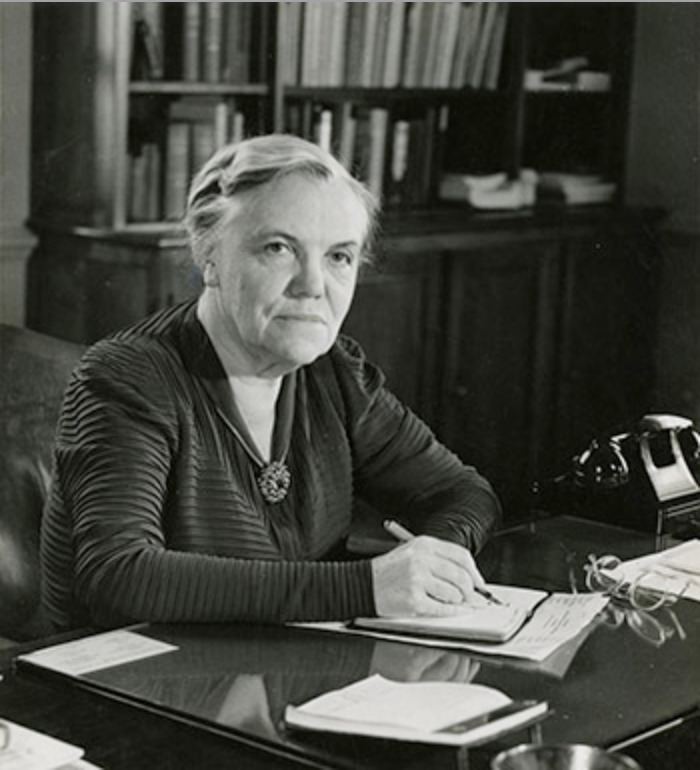Nationality American Name Katharine Blunt | Died 1954 | |
 | ||
Katharine Blunt (1876–1954) was a chemist, professor, and nutritionist who specialized in the fields of home economics, food chemistry and nutrition. Most of her research was done on nutrition, but she also made great improvements to research on calcium and phosphorus metabolism and on the basal metabolism of women and children.
Contents
Early life and education
Katharine Blunt was born on May 28, 1876 in Philadelphia, Pennsylvania. She was the first of three daughters of Stanhope English and Fanny Smyth Blunt. Charles Henry Smyth, Jr., was a first cousin. Blunt attended Porter School in Springfield, Massachusetts, then later enrolled in Vassar College, and studied chemistry. In 1898, she received a Bachelor of Arts degree and was elected to Phi Beta Kappa. After four years at home, she enrolled in the Massachusetts Institute of Technology (MIT) in 1902. Blunt received her Ph.D in organic chemistry from the University of Chicago in 1907.
Career
Blunt accepted a position as an assistant instructor of chemistry at Vassar College in 1903. In 1905, she left Vassar to study at the University of Chicago and earned a Ph.D in organic chemistry in 1907. Blunt was among a number of educated women with chemistry degrees who became part of the new field of home economics. This field made it possible for women to advance in the academic community. She believed that women who received their education in this new field were not only stretching the limits of their intellectual capacity and improving their imaginative thinking but were "making a direct contribution to wholesome living". Home economics was a field where it was easier and more accepted for women to expand their educations.
For one year she was an instructor in chemistry at Pratt Institute in Brooklyn, New York, then returned to Vassar College in 1908 as an instructor in chemistry.
In 1913, Katharine left Vassar again, this time for a position as an assistant professor in the department of home economics at the University of Chicago. She was later promoted to associate professor in 1918 and eventually became a full professor and chair of the Home Economics department in 1925. While she was the chair, the department grew to seventeen staff members and produced many researchers, administrators, and nutritionists. She was concerned that homes economics would not become an established profession, so she worked to make it an appropriate subject of instruction and to plan a scientific curriculum for training professionals. In 1928, the American Home Economics Association observed that Blunt’s administration had enhanced the quality of graduate work in the field, and that her own devotion to research had provided an invaluable example to students.
From 1917-1918, Katharine worked for the United States Department of Agriculture and the Food Administration, preparing pamphlets on food conservation. The pamphlets were later published as the textbook Food and the War. While writing these pamphlets, Blunt continued to publish articles on food chemistry and nutrition in scholarly journals. In 1930 he work hit a high point with the publication of Ultra-Violet Light and Vitamin D in Nutrition, a summary of research in the field, written with Ruth Cowan. All readers concerned with public health and welfare praised the book for its usefulness. During this time, she also served as an editor of the University of Chicago's Home Economics Series.
In 1929, Katharine was named the third president, first woman president of Connecticut College for Women, a four-year liberal arts college. As president, Kathrine made improvements which led to the college's accreditation in 1932. In 1943, she retired at the age of 67, but was recalled as president in 1945 and served in that position for another year. In distinction to the time she became president and left, the student body increased from 561 to 755, faculty from 62 to 93, and buildings from 16 to 34, ”including enough dormitories so that all students were housed on campus.” Blunt was determined to make education prepare the college woman for a life of active public service and to stimulate an interest in civic concerns. College, she believed, should train women so that their desires for public service do not “evaporate into vague benevolence, but develop into well-considered action”.
Death
After her retirement, she traveled extensively and later died of a pulmonary embolism on July 29, 1954 while recovering from a broken hip. Katharine believed that "the days of confining college education to the campus are over" and that women "with their belief in the force of education and their fresh political energy, can do much to serve the democracy which has helped them."
